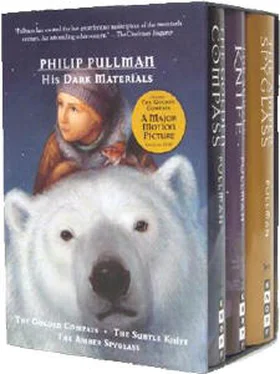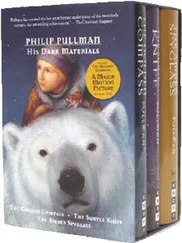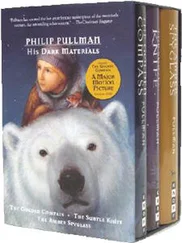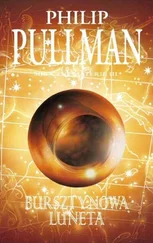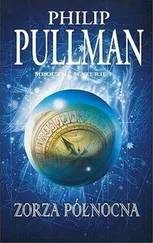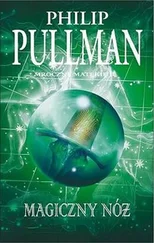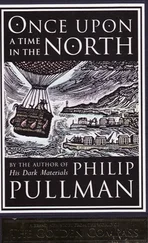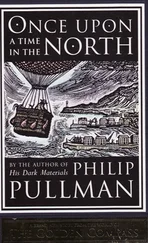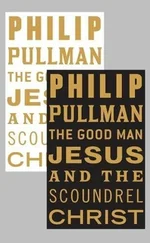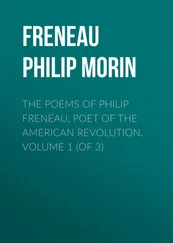Because they were different, said Mary.
Yes, they were. And so were their children, because as more seedpods fell, they showed their children how to use them. And when the children were old enough to ride the wheels, they began to generate the sraf as well, and the sraf came back with the oil and stayed with them. So they saw that they had to plant more seedpod trees for the sake of the oil, but the pods were so hard that they seldom germinated. So the first mulefa saw what they must do to help the trees, which was to ride on the wheels and break them, so mulefa and seedpod trees have always lived together.
Mary directly understood about a quarter of what Atal was saying, but by questioning and guessing she found out the rest quite accurately; and her own command of the language was increasing all the time. The more she learned, though, the more difficult it became, as each new thing she found out suggested half a dozen questions, each leading in a different direction.
But she pulled her mind after the subject of sraf , because that was the biggest; and that was why she thought about the mirror.
It was the comparison of sraf to the sparkles on water that suggested it. Reflected light like the glare off the sea was polarized; it might be that the shadow particles, when they behaved like waves as light did, were capable of being polarized, too.
I can’t see sraf as you can, she said, but I would like to make a mirror out of the sap lacquer, because I think that might help me see it.
Atal was excited by this idea, and they hauled in their net at once and began to gather what Mary needed. As a token of good luck there were three fine fish in the net.
The sap lacquer was a product of another and much smaller tree, which the mulefa cultivated for that purpose. By boiling the sap and dissolving it in the alcohol they made from distilled fruit juice, the mulefa made a substance like milk in consistency, and delicate amber in color, which they used as a varnish. They would put up to twenty coats on a base of wood or shell, letting each one cure under wet cloth before applying the next, and gradually build up a surface of great hardness and brilliance. They would usually make it opaque with various oxides, but sometimes they left it transparent, and that was what had interested Mary: because the clear amber‑colored lacquer had the same curious property as the mineral known as Iceland spar. It split light rays in two, so that when you looked through it you saw double.
She wasn’t sure what she wanted to do, except that she knew that if she fooled around for long enough, without fretting, or nagging herself, she’d find out. She remembered quoting the words of the poet Keats to Lyra, and Lyra’s understanding at once that that was her own state of mind when she read the alethiometer – that was what Mary had to find now.
So she began by finding herself a more or less flat piece of a wood like pine, and grinding at the surface with a piece of sandstone (no metal: no planes) until it was as flat as she could make it. That was the method the mulefa used, and it worked well enough, with time and effort.
Then she visited the lacquer grove with Atal, having carefully explained what she was intending, and asked permission to take some sap. The mulefa were happy to let her, but too busy to be concerned. With Atal’s help she drew off some of the sticky, resinous sap, and then came the long process of boiling, dissolving, boiling again, until the varnish was ready to use.
The mulefa used pads of a cottony fiber from another plant to apply it, and following the instructions of a craftsman, she laboriously painted her mirror over and over again, seeing hardly any difference each time as the layer of lacquer was so thin, but letting it cure unhurriedly and finding gradually that the thickness was building up. She painted on over forty coats – she lost count – but by the time her lacquer had run out, the surface was at least five millimeters thick.
After the final layer came the polishing: a whole day of rubbing the surface gently, in smooth circular movements, until her arms ached and her head was throbbing and she could bear the labor no more.
Then she slept.
Next morning the group went to work in a coppice of what they called knot wood, making sure the shoots were growing as they had been set, tightening the interweaving so that the grown sticks would be properly shaped. They valued Mary’s help for this task, as she on her own could squeeze into narrower gaps than the mulefa , and, with her double hands, work in tighter spaces.
It was only when that work was done, and they had returned to the settlement, that Mary could begin to experiment, or rather to play, since she still didn’t have a clear idea of what she was doing.
First she tried using the lacquer sheet simply as a mirror, but for lack of a silvered back, all she could see was a doubled reflection faintly in the wood.
Then she thought that what she really needed was the lacquer without the wood, but she quailed at the idea of making another sheet; how could she make it flat without a backing anyway?
The idea came of simply cutting the wood away to leave the lacquer. That would take time, too, but at least she had the Swiss Army knife. And she began, splitting it very delicately from the edge, taking the greatest of care not to scratch the lacquer from behind, but eventually removing most of the pine and leaving a mess of torn and splintered wood stuck immovably to the pane of clear, hard varnish.
She wondered what would happen if she soaked it in water. Did the lacquer soften if it got wet? No , said her master in the craft, it will remain hard forever; but why not do it like this? And he showed her a liquid kept in a stone bowl, which would eat through any wood in only a few hours. It looked and smelled to Mary like an acid.
That would hurt the lacquer hardly at all, he said, and she could repair any damage easily enough. He was intrigued by her project and helped her to swab the acid delicately onto the wood, telling her how they made it by grinding and dissolving and distilling a mineral they found at the edge of some shallow lakes she had not yet visited. Gradually the wood softened and came free, and Mary was left with the single sheet of clear brown‑yellow lacquer, about the size of a page from a paperback book.
She polished the reverse as highly as the top, until both were as flat and smooth as the finest mirror.
And when she looked through it…
Nothing in particular. It was perfectly clear, but it showed her a double image, the right one quite close to the left and about fifteen degrees upward.
She wondered what would happen if she looked through two pieces, one on top of the other.
So she took the Swiss Army knife again and tried to score a line across the sheet so she could cut it in two. By working and reworking, and by keeping the knife sharp on a smooth stone, she managed to score a line deep enough for her to risk snapping the sheet. She laid a thin stick under the score line and pushed sharply down on the lacquer, as she’d seen a glazier cutting glass, and it worked: now she had two sheets.
She put them together and looked through. The amber color was denser, and like a photographic filter it emphasized some colors and held back others, giving a slightly different cast to the landscape. The curious thing was that the doubleness had disappeared, and everything was single again; but there was no sign of Shadows.
She moved the two pieces apart, watching how the appearance of things changed as she did so. When they were about a hand span apart, a curious thing happened: the amber coloring disappeared, and everything seemed its normal color, but brighter and more vivid.
Читать дальше
